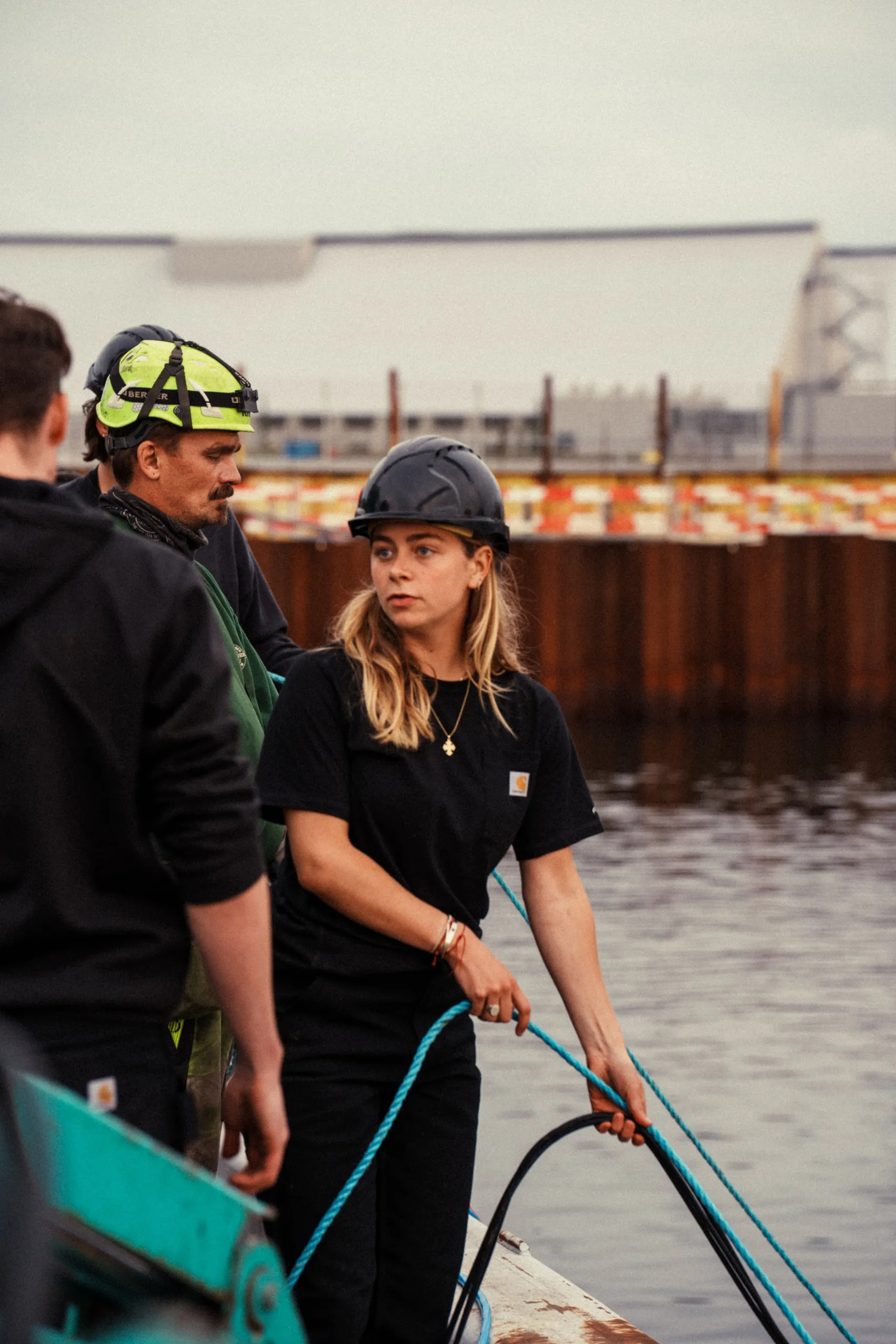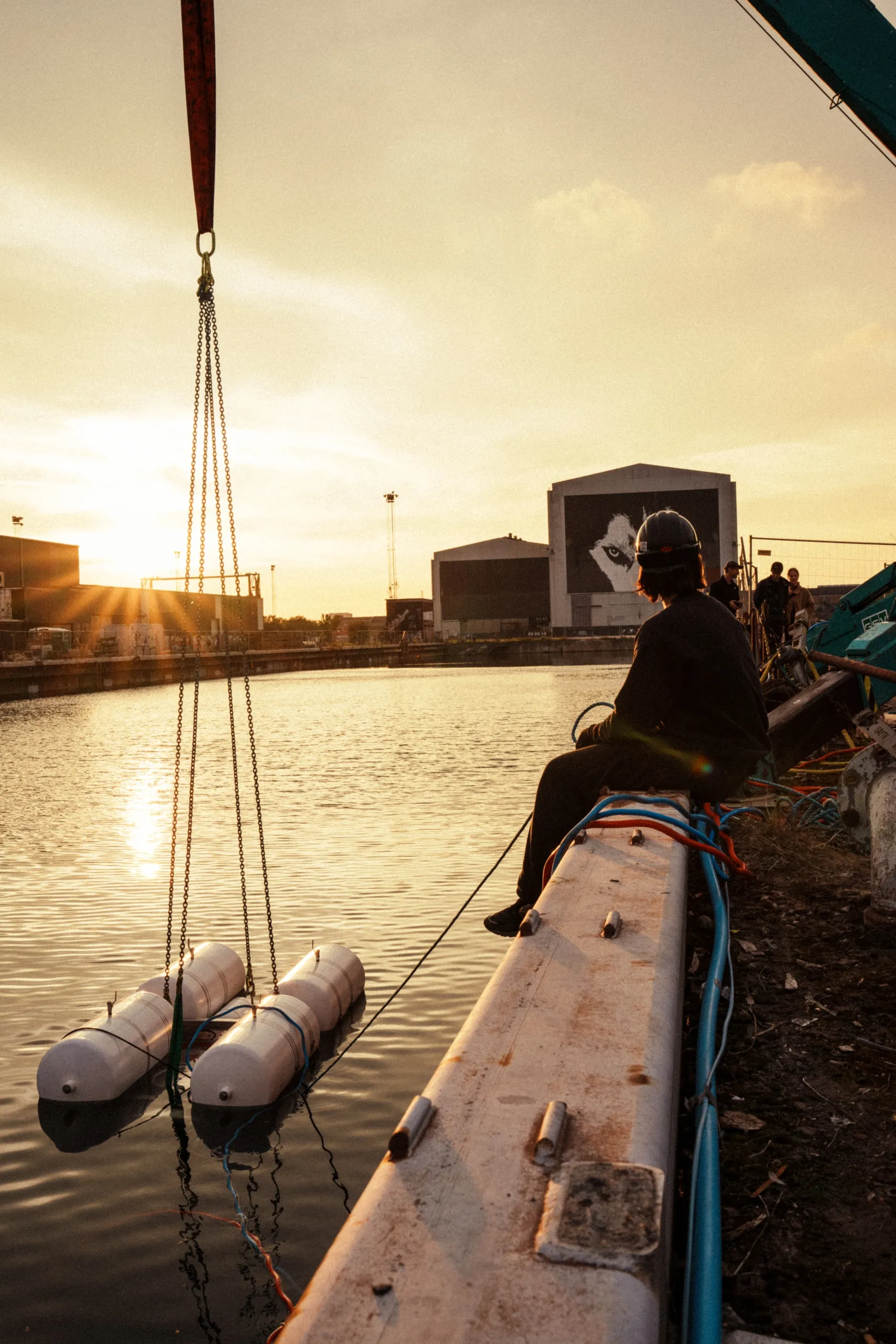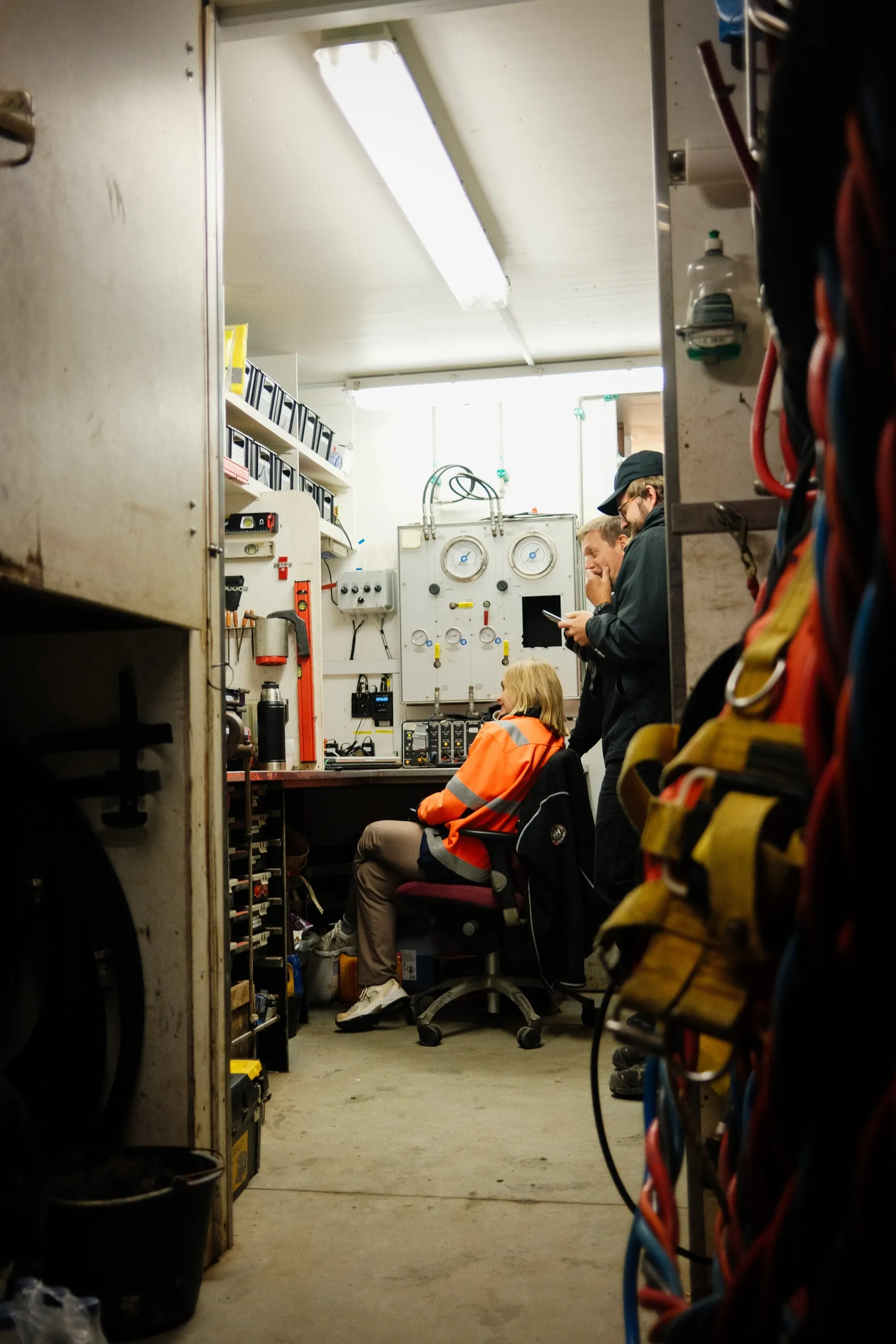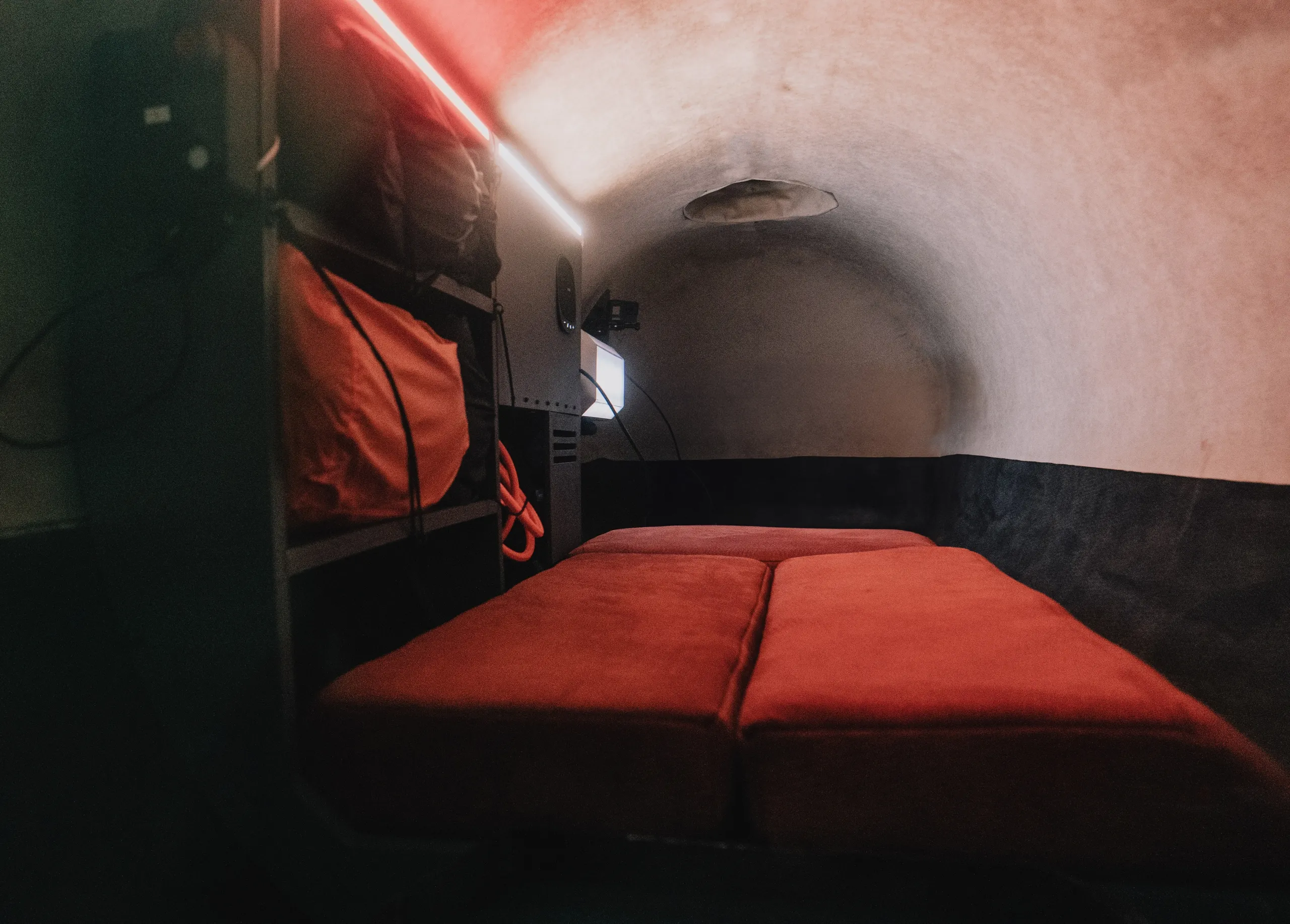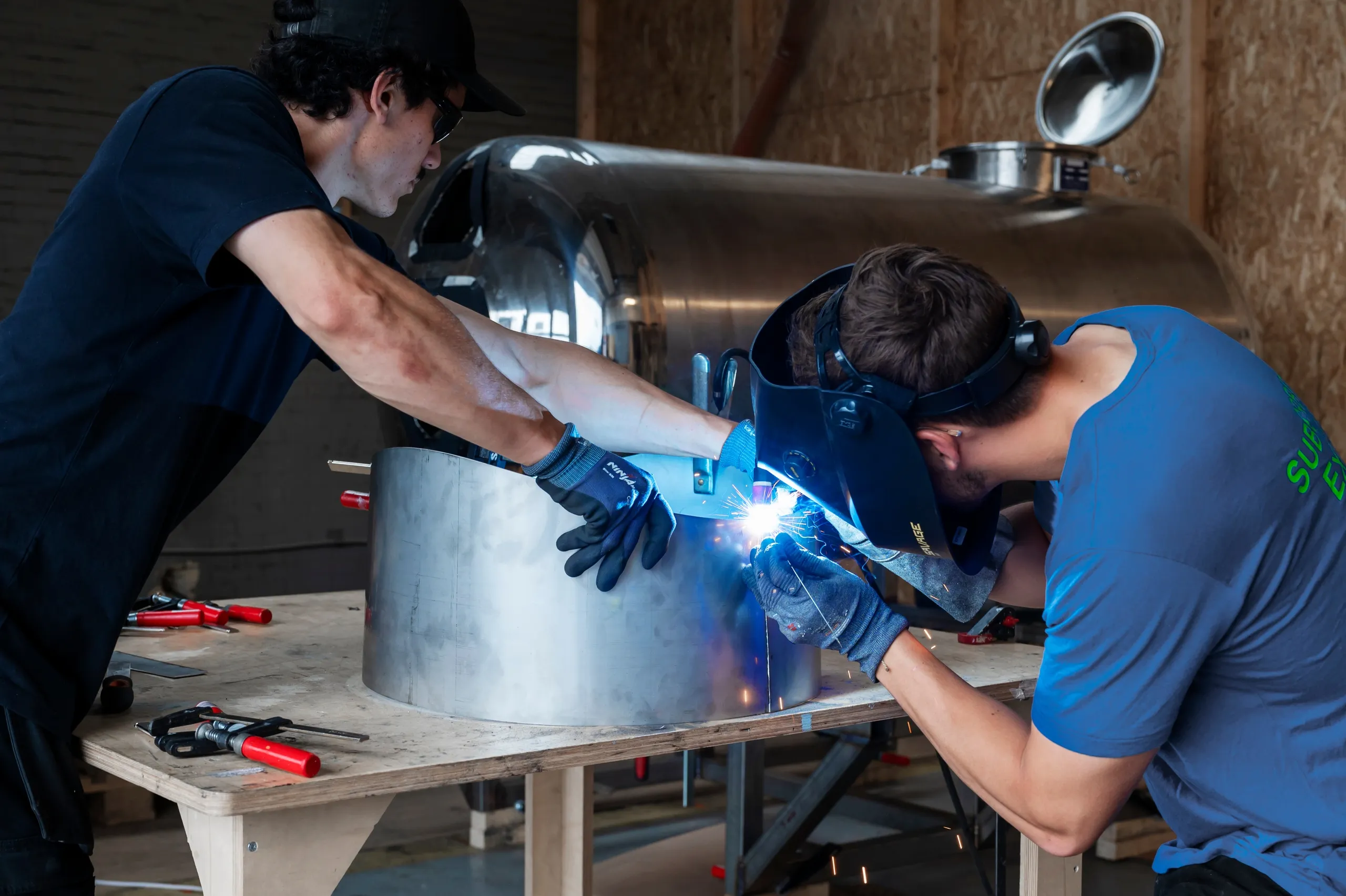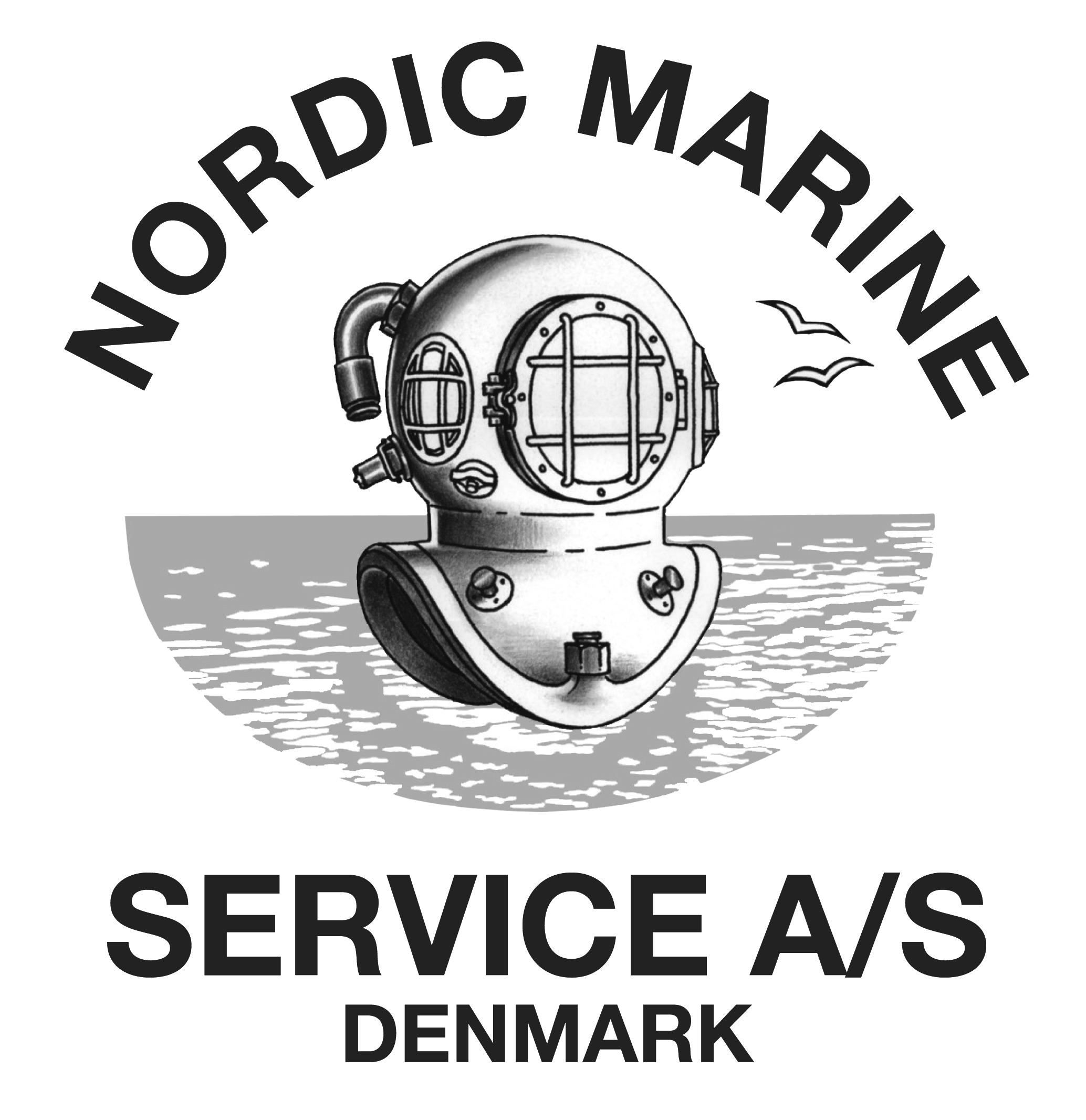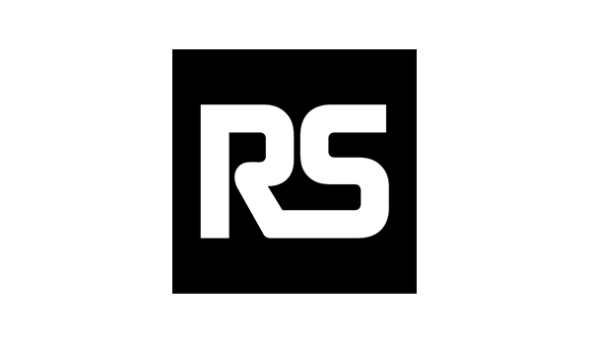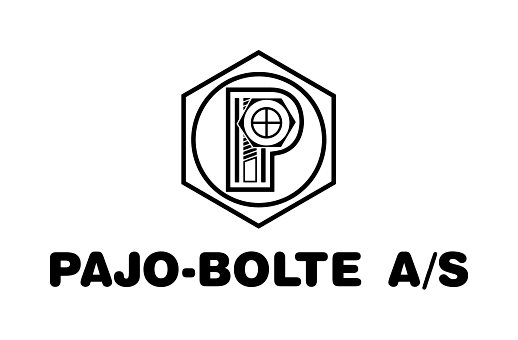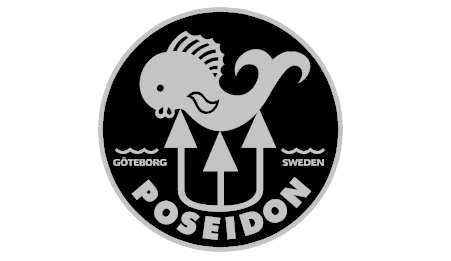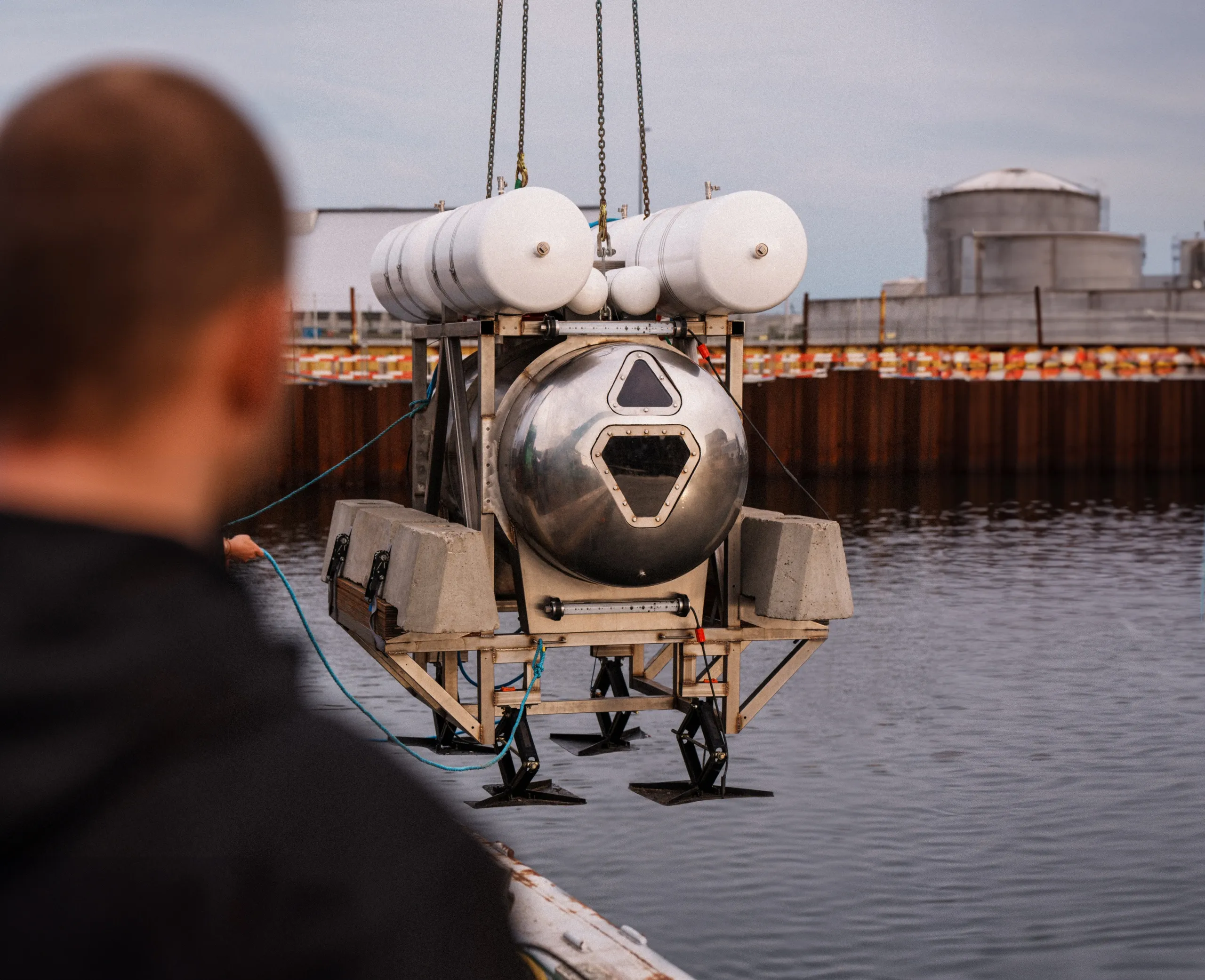
Uhab
SAGA's next step on its roadmap to space is habitats under water. We've completed the first phase: building the smallest functional underwater habitat and tested successfully it at 7 meter depth in the Copenhagen Harbour for 48-hours.
Pilot mission
As a technology demonstrator, we built a pilot habitat to test the basic subsystems necessary to support life submerged in water. It includes all of the same technology that is necessary for a full-scale underwater habitat, but at a small scale. One of SAGA's founders, Sebastian, tested it in September, 2023.
CREW
1 Person
SIZE
1.5m²
DURATION
48 hours
LOCATION
Denmark
DEPTH
7m
DATE
September 2023

To lower and raise the habitat
To fill ballast tanks with air and breathable gas as a backup air supply
1800L of livable volume ~ 1.5m²
Thick polycarbonate windows for external view
Counteract buoyancy of main tanks
Accommodates uneven terrain
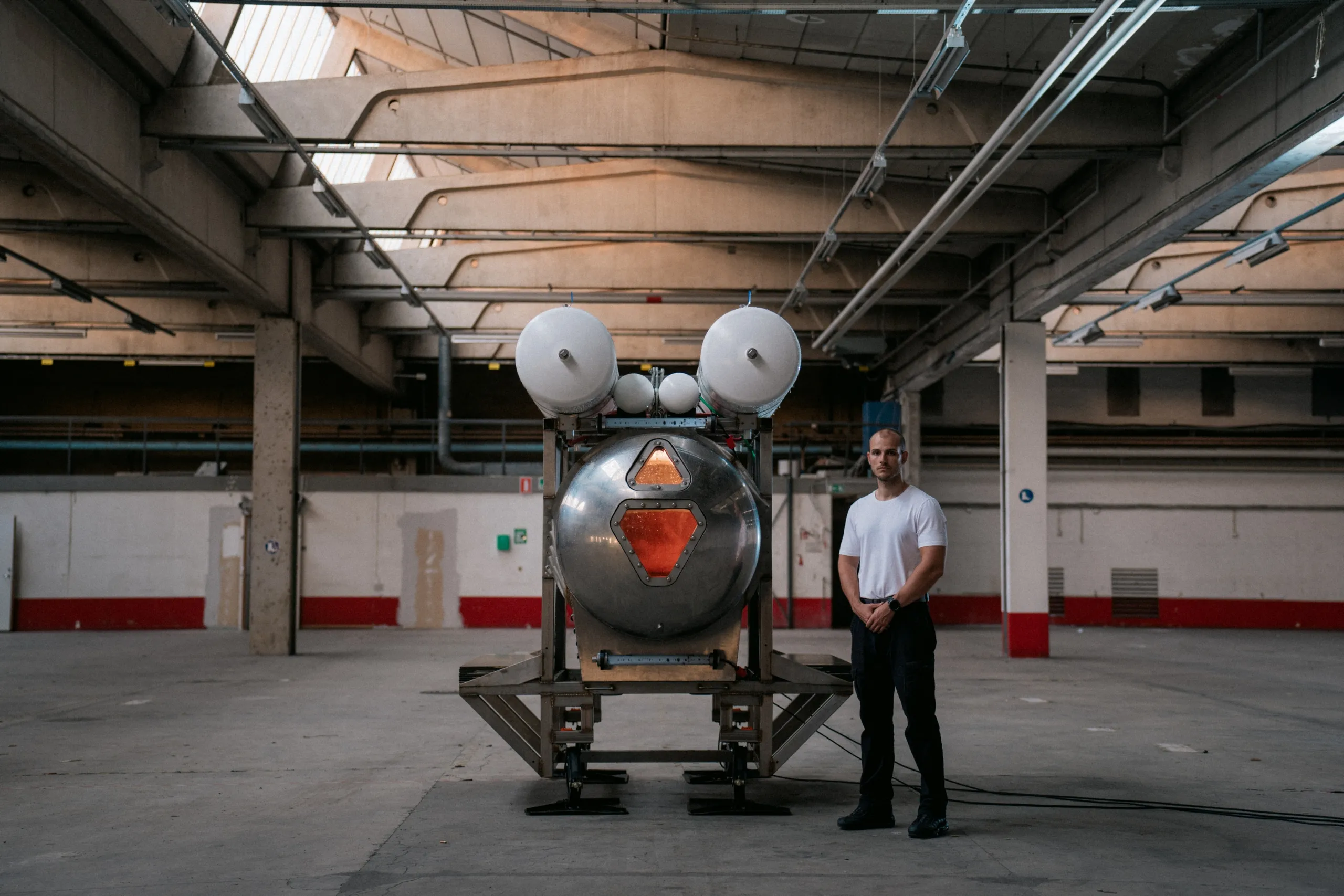
How do humans survive in the most extreme environments? More people are going to outer space than ever before on longer missions, and knowledge of our home planet's ecosystems is more crucial than ever due to climate change. Living and working in the highly operational, isolated and extreme environment of the aquatic realm has provided significant science and engineering for the benefit of human spaceflight.
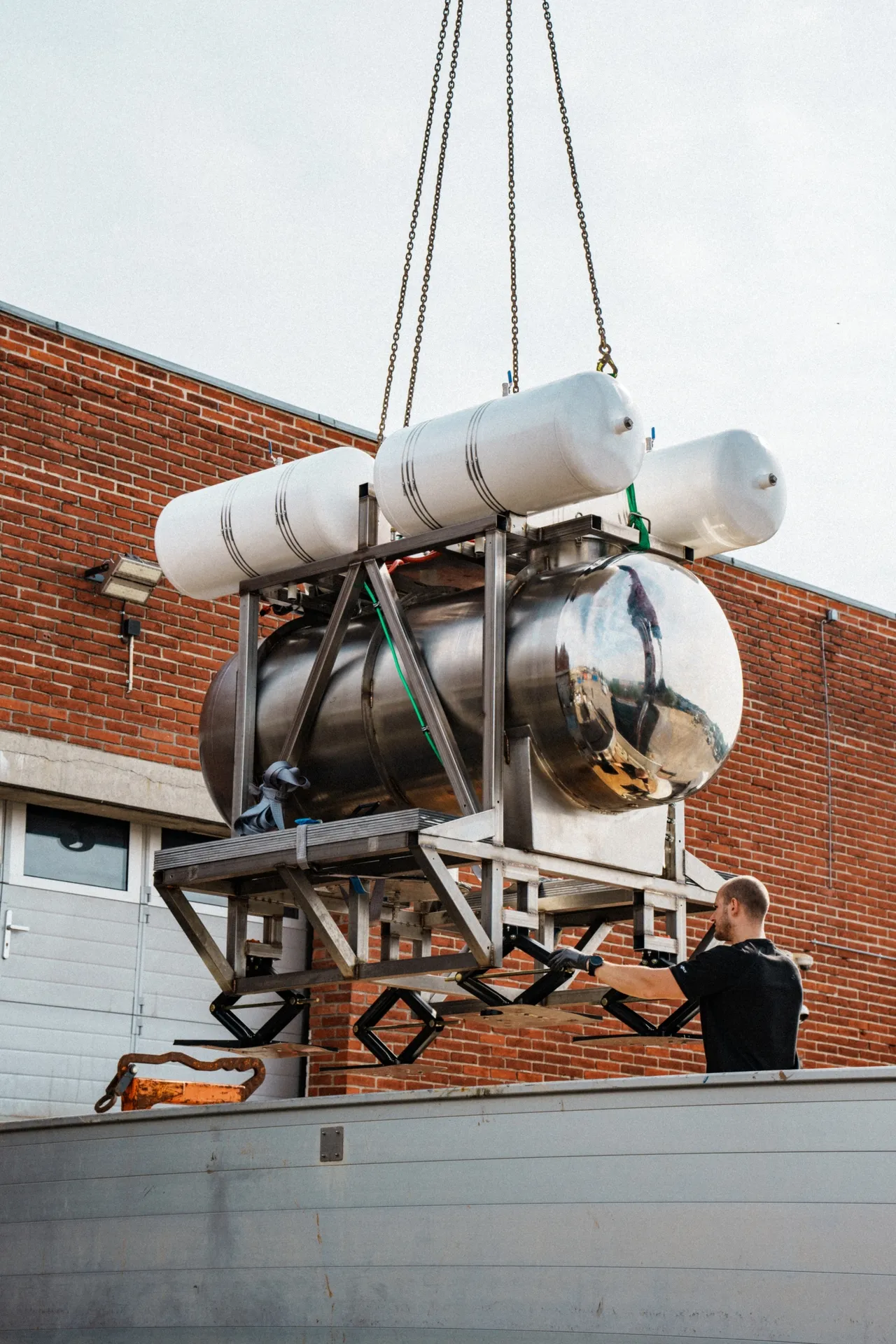
Why underwater?
We set forth a project to design, construct, and operate an underwater habitat for one crew member to live in, providing a facility that opens the door to novel approaches in marine ecosystem research that are not possible with current technology. Equally, it will serve as a high-fidelity astronaut training facility, due to the underwater environment's similarities to outer space
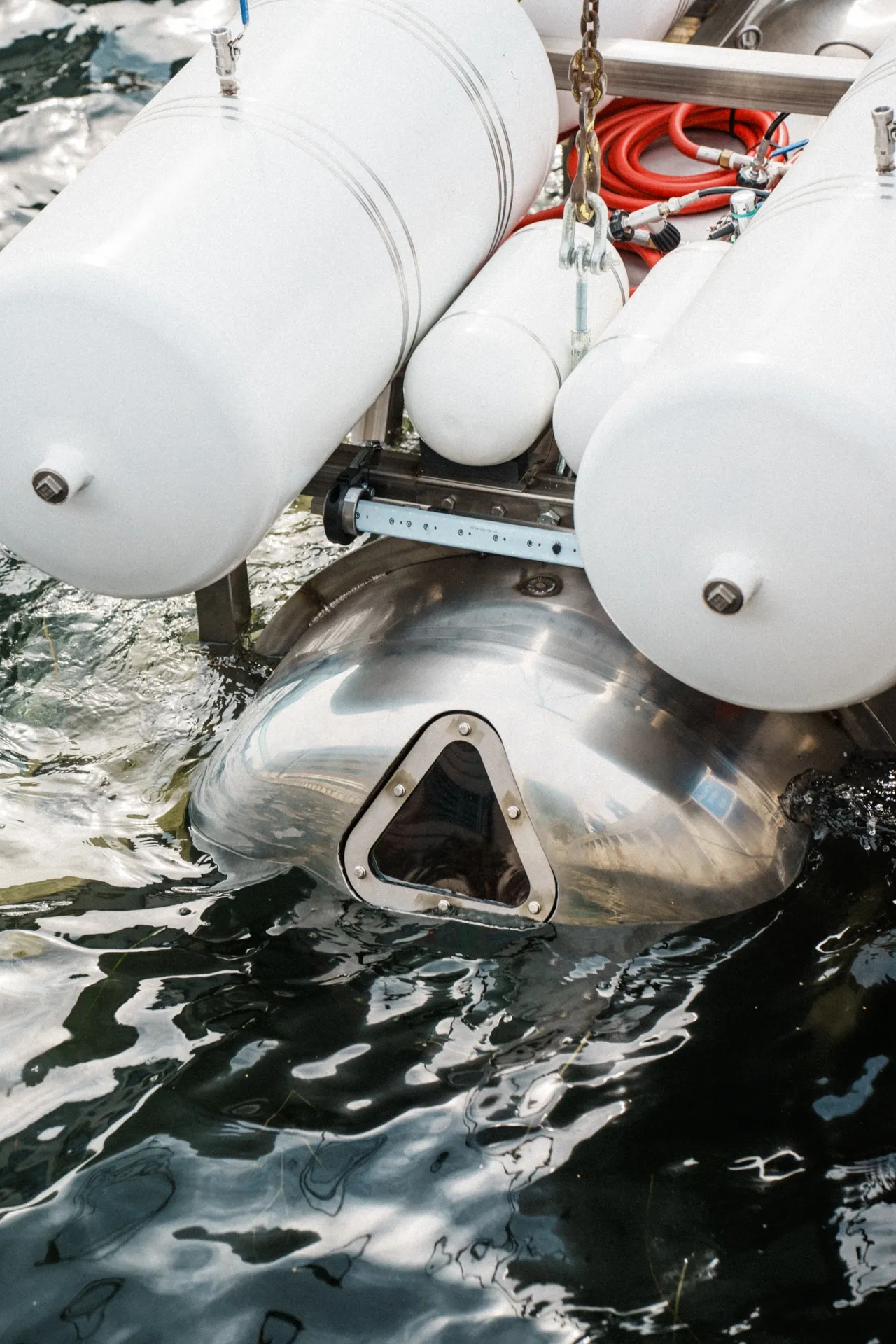
underwater science
By studying marine life, we can develop sustainable solutions to address environmental issues. Prioritizing the preservation and enhancement of our oceans is crucial to understand the ecosystems of our planet and combating climate change. Living in a fully submerged underwater habitat offers the opportunity to extend time on the ocean floor without the need for decompression after each dive.
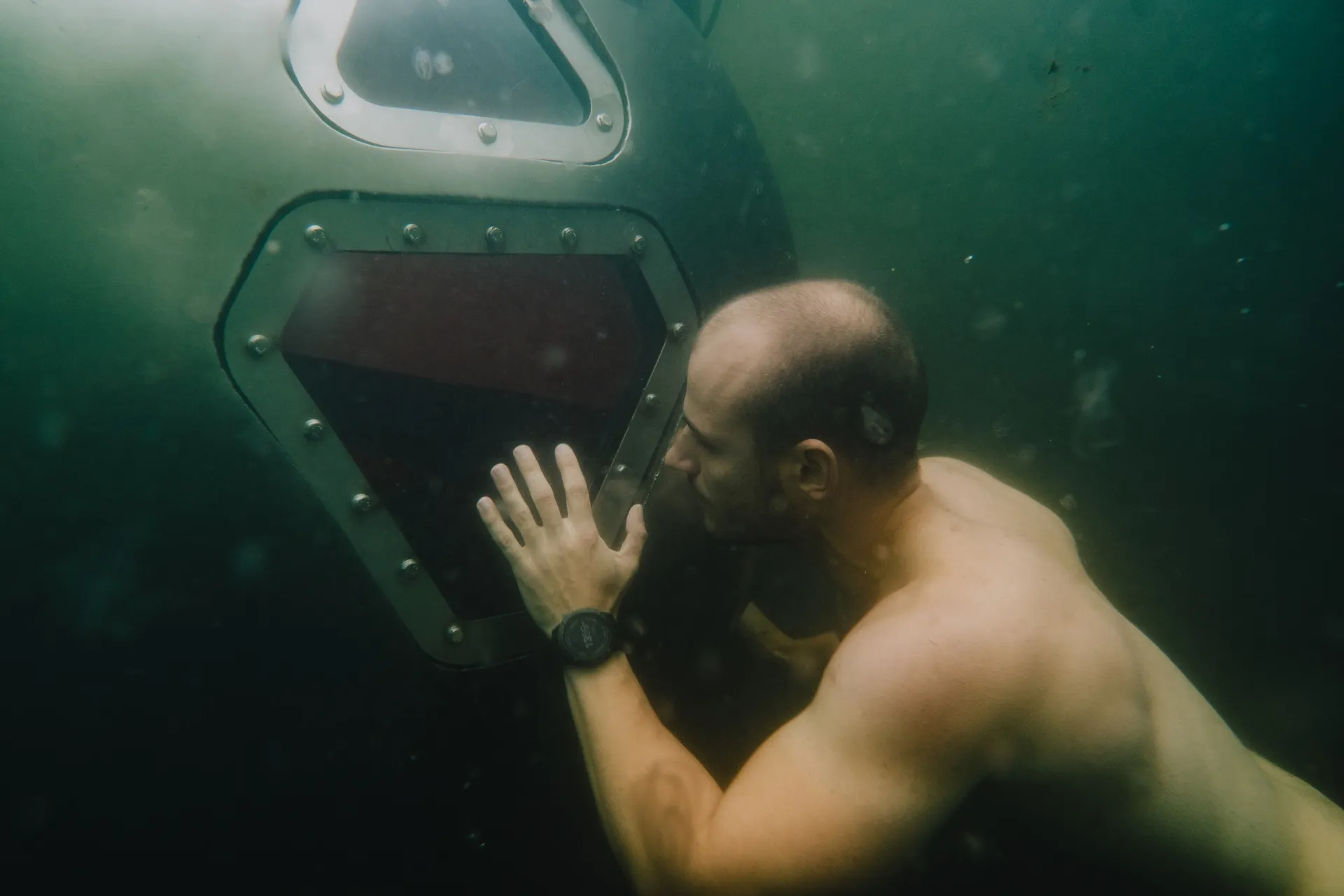
Astronaut training
Staying underwater is the closest feeling to being in space, and sets high demands on our architecture to perform, be stimulating, and non-claustrophobic. Underwater habitats can provide valuable insights into the physical and psychological challenges faced by astronauts during long-term space missions.
48 HOURS under water
In September 2023, SAGA successfully lived underwater at a depth of 7m in Copenhagen Harbour. Our onshore team of engineers, project managers, and rescue divers continuously monitored data from the habitat to ensure the mission's safety

DESIGNED, built and tested in-house
The entire habitat, from the first idea to the final bolt, has been designed and built in our studio in Copenhagen. To monitor the habitat in real-time, we developed Raven — a series of smart sensors collecting all necessary data into our Habitat OS, Odin
Advisory Board

Tuva Cihangir Atasever
Turkish Space Agency
Astronaut

Dr. Lonnie Petersen
MIT
Professor Aerospace Engineering, Physiology in Spaceflight

Morten Steen
Kingfish
Diving Instructor and Safety advisor

Dr. Bjørn Arenkiel
Hyberbaric unit Rigshospitalet
Consultant in anesthesiology, specialist in diving and hyberbaric medicine
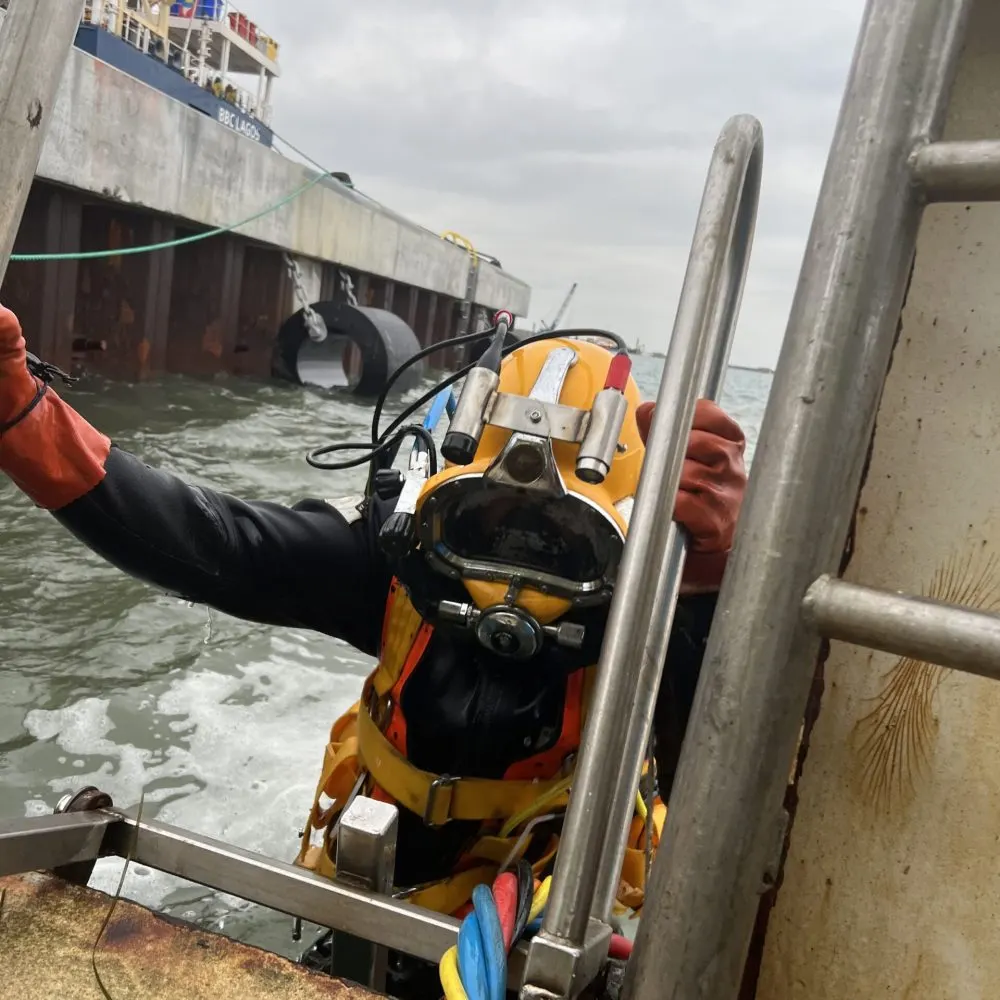
Kenneth Andersen
Nordic Marine Service A/S
Managing Director & Underwater Operation Expert

Dr. Patrizio Mariani
DTU Aqua
Professor, Marine Technology, Marine Ecosystem Research
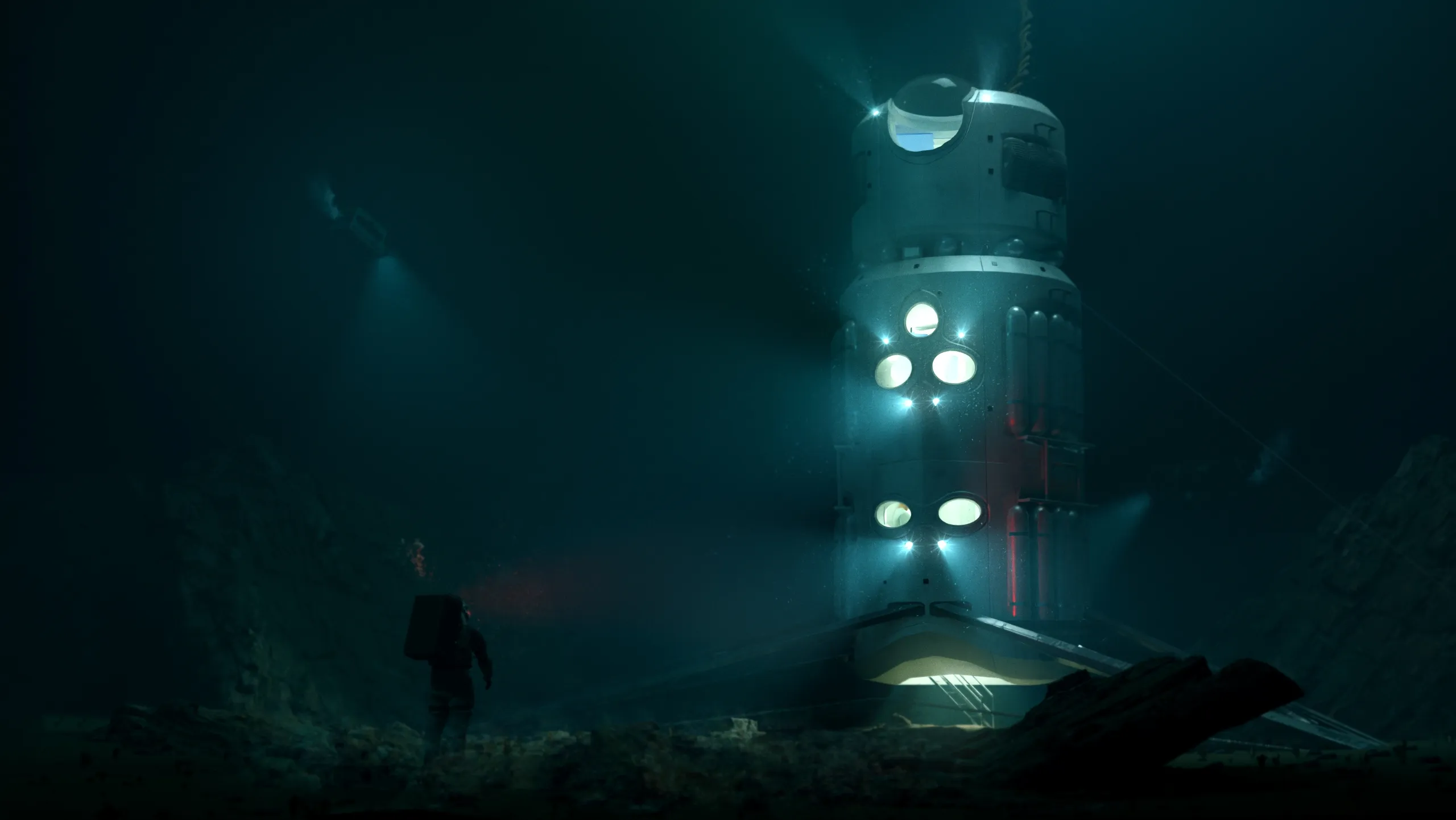
2026 mission:
Full habitat
Targeting 2026, SAGA aims to build the full-scale underwater habitat in European waters, which will support a crew of 4 to carry out activities for longer durations than possible when diving.
It will serve primarily as a training facility for astronaut and space mission training, which is only possible in the USA. The habitat will also serve as a marine research facility.
PILOT HABITAT (2023)
FULL HABITAT (2026)

space industry training
In a rapidly growing space industry, with more private ventures than ever before and NASA planning its return to the Moon, the need for innovation in space habitation is steadily increasing (Landon et al., 2023). Also, in the context of astronaut training, the habitat can provide great value as current options for analog training habitats are extremely limited. By simulating isolated and extreme environments similar to those encountered during space missions, underwater habitats can provide valuable insights into the physical and psychological challenges faced by astronauts during long-term missions due to its similar small, closed environment, as well as the necessary advances in technology and engineering, ultimately contributing to the success of future space missions (Geological Society of America, 2011; Landon et al., 2023).
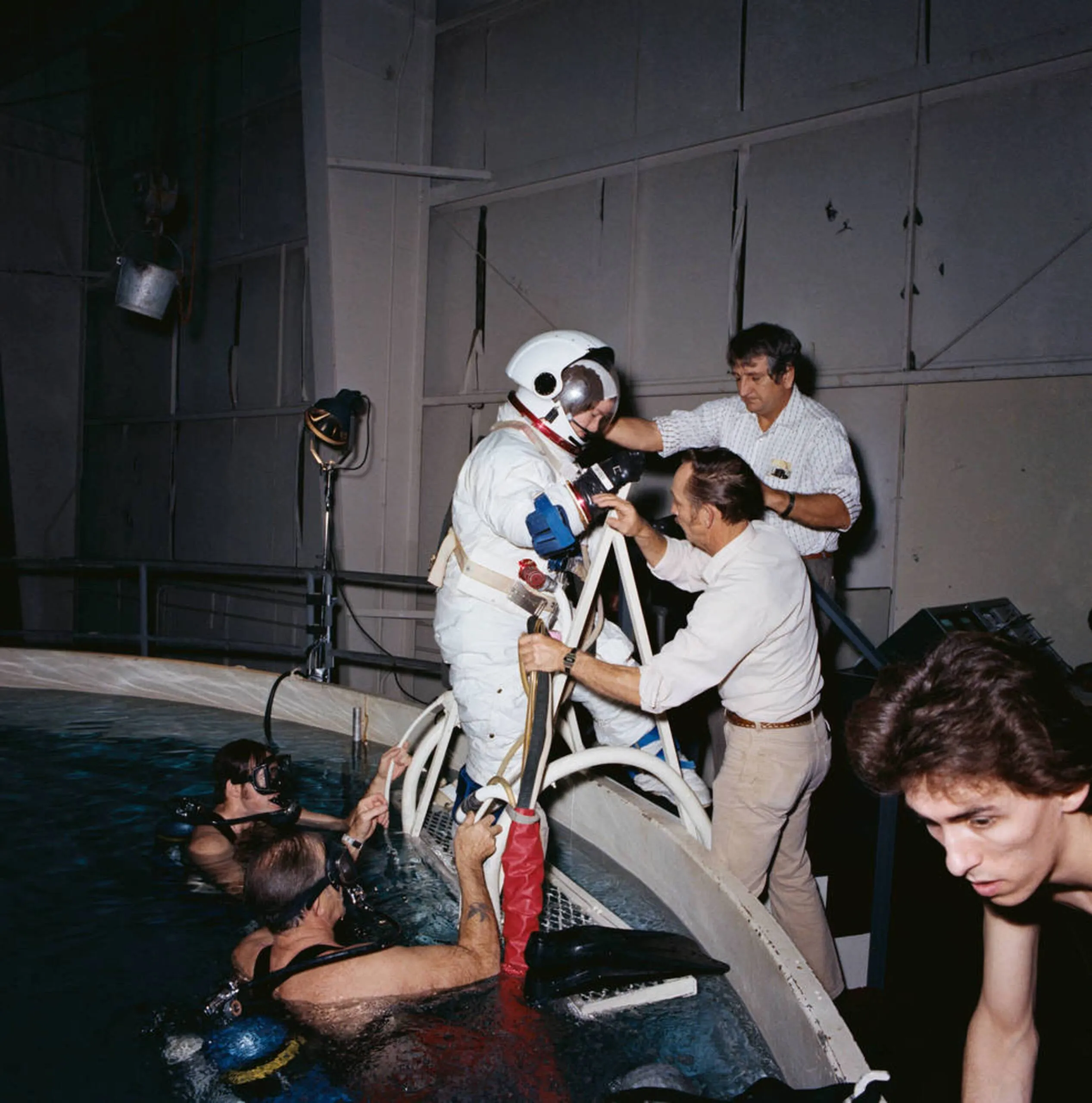
climate Science
The accelerating degradation of the natural environment presents significant risks to the access of future generations to the invaluable goods and services offered by marine ecosystems. In order to combat climate change and biodiversity loss in the ocean, it is crucial to establish long-term marine observatories. However, these observatories often imply high costs since research vessels are the sole multi-purpose platform for comprehensive process-based exploration of the sea in four dimensions. Therefore, the proposed development of underwater habitats for humans can demonstrate new standards for ocean exploration, long-term monitoring, and technology development and to acquire the essential knowledge needed for the sustainable utilization of the sea (Sebens et al., 2013).

TRL growth platform
It will be a technology test platform to increase TRL levels for human-rated spaceflight hardware and technology for underwater environments.
Examples include:
Habitation countermeassures for long-duration spaceflight;
Respiration, growth and carbon sequestration in plankton (with novel processing of samples in-situ);
Drivers of oxygen dynamics at the interface between seabottom and water column;
Marine habitat dynamics under multiple pressures (warming, acidification, noise, light, etc.);
Adaptive sampling with autonomous and robotic devices (e.g., ROVs, autonomous cameras, etc.);
Long-term monitoring of underwater environments in four dimensions.




